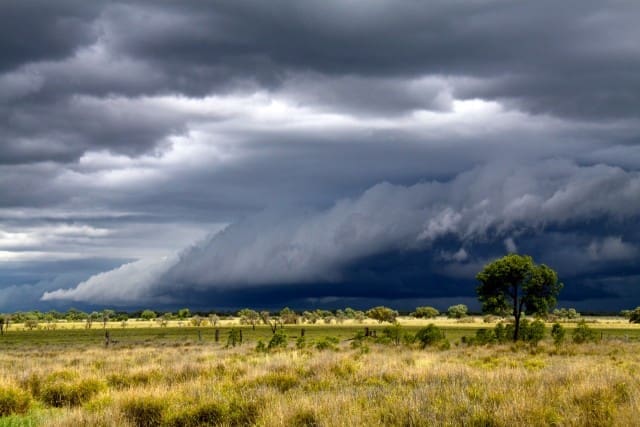As we head towards the end of our summer rainfall and grass growing season, the big question is whether the current El Niño is going to break down over the next few months or persist on into late winter or spring of 2016.
The 2015-16 El Niño has been the strongest on record, with sea surface temperatures in the Eastern and Central Pacific more than three degrees Celsius (oC) above normal during the second half of 2015 and into 2016. This makes this event comparable to the very strong 1982-83 and 1997-98 El Niño events.
El Niño and La Niña events traditionally peak during spring and summer and decay during autumn and early winter. However, given an El Niño is defined by the US Government Climate Prediction Center as 0.5oC above normal, it’s fair to say we still have a way to go before the current event is over.
With the key autumn period rapidly approaching, climate scientists are again looking closely at their models and data to assess how much longer the current pattern is likely to remain in force, and what might come next.
The World Meteorological Organisation (WMO) last week announced that the 2015-2016 El Niño has officially peaked, with sea surface temperatures in the central and eastern Pacific having cooled by 0.5 oC since December. However, the WMO also stated that the current El Niño will continue to be a major influence on global climate patterns for at least another few months before potentially decaying away from April to June.
Want more Beef Central news? Click here to get our free daily emails
Looking further ahead, some climate models – albeit a minority at this point – are pointing to a possible La Nina pattern emerging by next summer.
Where El Niño patterns typically mean drier than average winter, spring and summers throughout eastern and northern Australia, La Niña patterns are typically associated with a predominately wetter than average climate during spring and summer.
The US based National Oceanic and Atmospheric Administration (NOAA) says there is a 50 percent chance that La Niña could show by the end of winter.
However, this is not supported by most climate models yet.
Climate scientist David McRae from the International Centre for Applied Climate Science at the University of Southern Queensland in Toowoomba said that while a case could be made to say a La Nina may be on the way, that case is not yet strong enough for drought-affected cattle and sheep producers to pin their hopes on.
“The reality is that because the El Niño was so strong, 3 to 5 degrees warmer than normal in the central Pacific, there is still a real risk it could persist on until at least September or October,” Mr McRae explained.
“This and the output from key atmosphere-ocean models we refer to means there is now less confidence the El Niño will switch over into a La Niña this autumn or winter.”
In the shorter term though, for producers throughout most of NSW, Victoria, southern half of South Australia and parts of the Warrego, far western Darling Downs and Burnett regions of Queensland, the outlook is quite reasonable for some useful rain.
”Based on the current SOI phase there is a60 to70pc chance of getting at least median rainfall during February to April in those regions” Mr McRae said.
The Southern Oscillation Index (SOI) measures the barometric air pressure between Darwin and Tahiti. When SOI values are strongly positive it usually means more low pressure systems over Australia and therefore more opportunity for rainfall. Conversely, consistently negative SOI values typically mean more high pressure systems and less opportunity for rain.
The last time there was a positive monthly value of the SOI was back in May 2014. As of the 21 February the 30 day average of the SOI was minus 11. For more information click here to view the International Centre for Applied Climate Sciences home page.





HAVE YOUR SAY